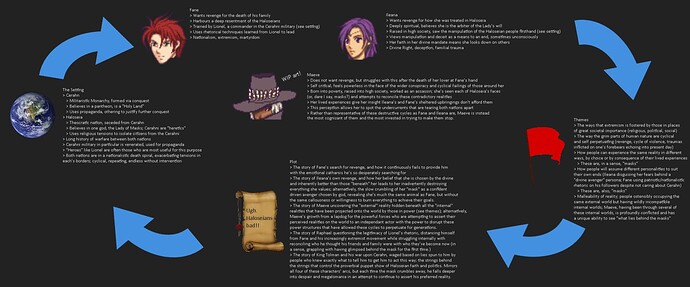Story Structure IV: Synthesis
Wherein I discuss how each of the previous three entries in this series intermingle, building off each other to create a cohesive and meaningfully complete whole.
Intro A: What is synthesis?
Throughout this series, I’ve been saying the same thing, over and over; “we’ll be discussing how to do this in more detail at a later date.” Well, a later date has finally arrived, and today I want to talk about the hard part of writing a story; the part where you take the plot, the setting, the characters and their character arcs, the themes, and combine them all to make a story. It’s easy to theorycraft about how cool a character would be or about how fun a setting is or how much you’re gonna explore X topic, but it’s hard to place all of those things into your story, execute on all of them, and make them all feel like they belong. This is often the thing I hear people ask me the most when I discuss things like theming; what’s the point? Why do we care about theming? Why do we care about a sense of place and immediacy in a setting? What does any of what I’ve been talking about mean when put together?
I’m sure there’s an actual term for this, but like everything I do I mostly come to these conclusions on my own and use the terminology that most makes sense to me; for me, this process is synthesis, as it’s the process by which the disparate elements of storytelling are synthesized into a meaningful product.
Intro B: Synthesis in Lady of Masks
We’re gonna work backwards for a moment here, as I think it will be far easier to understand what we’re working towards if I demonstrate by example what we’re working towards here by providing you with an example of the result of synthesis. In essence, to synthesize your story, you’re going to be looking at each of the ways the four pillars of your story that I’ve outlined in the past overlap, feed into one another, and support each other’s messages. Below is a chart I’ve made outlining, from the top and going clockwise, the characters, themes, plotlines, and setting of Lady of Masks. Take note, as you read, of the way similar concepts come up over and over throughout. I recommend starting at the setting and working your way clockwise from there, but the chart format is specifically so you can jump around as need be.
You’ll notice, by the end, that it becomes quite hard to disentangle several of these elements from each other, particularly in their thematic significance. The plotlines are all extremely character driven; the characters are all products of the setting; the setting is tailored entirely to fit the thematic elements of the character and the plotlines involving them. This is because this is not a starting point from which to take off, but rather a synthesized story that’s been being worked on for more than two years. Each of these elements has already been merged with the others, such that there’s a bit of a chicken and egg situation going on wherein neither one is necessarily based on another one as they were all built in unison based on earlier drafts of the story where these elements existed in isolation.
While I knew I wanted to do a commentary on extremism and nationalism with the storyline, most of the other themes were found via the writing process. Characters like Ileana and Maeve didn’t even exist in early drafts of the story, or at least the way they existed was so different from how they exist now that they were essentially entirely different characters. The plot was barely more than a set of three or four “big moments” I wanted to hit and a vague idea of ways certain characters might react to those big moments. The setting was barely established early on, to intentionally leave as much room as possible to fill in these gaps with information that supported the more significant ideas I ran into as the writing process began. It was synthesis that allowed me to take my plot from the equivalent of some scribblings on a napkin to what it is today.
Intro C: what does the chart mean xil what are the arrows
Alright, let’s get down to business.
The characters are all introducing major concepts that then become thematic elements, or else become responses to some of the questions that might be raised by the consideration of these thematic elements. In this way, the characters feed into the themes; their actions shed light on the complexities of these themes, provide new ways to view them, new questions and new answers. Without these characters, there would be no conduit through which to view the way these themes affect real life. Characters are people; we are people; seeing these themes reflected in the characters elucidates why these themes should matter for us as people.
The plot is primarily a way to structure the way the player will receive all this information, in the way I personally view it. Since I start with characters first, the plot is for me usually a vehicle through which those characters are explored, and I decide how they’re explored by way of the thematic elements that characters introduce to the story. In this way, the themes are fueling the story, having been fed by the characters that embody those themes. Each of these plotlines is meant to help develop the themes for the audience, and my understanding as the writer of these plotlines as to how they’re going to do that is borne of my understanding of the themes; an understanding borne of my prior understanding of the characters and the concepts that they introduce to the story.
The setting is a place within which the plot and characters are allowed to reside. The plot kind of acts like a river, eroding paths through the setting through which the “topography” of the setting is defined. In a more literal term, the plot dictates the paths the setting takes; what’s important to be established? What history has to have taken place? What places have to exist? How does faith factor into all of this? Ethnic groups? All of this is information I decide based on what’s relevant to the plot – as I explained in my worldbuilding writeup, short though it was (and yes, I know it technically wasn’t labelled as being part of this series, but it still exists  ), worldbuilding that isn’t relevant to the story being told is, in my opinion, superfluous and meaningless outside of maybe a bit of flavour. In an environment as economically tight as an FE plot, you only really have time to explore those inconsequential bits as either spice added to a dialogue that’s significant for other reasons, or via supports and the like. In this way, the plot feeds the setting, as the setting has to allow for and support each element of the plot. Elements which, as we discussed before, were formed by way of an understanding of the themes, which we understand due to the characters and the concepts they’ve introduced into the story.
), worldbuilding that isn’t relevant to the story being told is, in my opinion, superfluous and meaningless outside of maybe a bit of flavour. In an environment as economically tight as an FE plot, you only really have time to explore those inconsequential bits as either spice added to a dialogue that’s significant for other reasons, or via supports and the like. In this way, the plot feeds the setting, as the setting has to allow for and support each element of the plot. Elements which, as we discussed before, were formed by way of an understanding of the themes, which we understand due to the characters and the concepts they’ve introduced into the story.
But now we’ve circled back around: the characters are borne of the setting, in a literal in-universe sense. They grew up in it, have opinions on it, share a history with it, etc… The characters may have existed in a vacuum when I first made them, as that was where I started when I began writing LoM, but now we have setting to provide greater context; a setting informed by the plot; a plot informed by the themes; themes informed by our characters; characters who, now, are being fleshed out and developed even further as according to the setting we’ve established.
New emphasis is being added to them, and our understanding is being fleshed out across the board now: by knowing their history, the setting has been built upon, and the historical event we’ve added has thematic elements that we now think are worthy of pursuing, and so our themes have been developed as well. That pursuit is done through the plot, which requires having characters to act out that plot, meaning the characters now must be fleshed out further in order to figure out how they’ll act out this element of the plot alongside everything else they were already doing. This fleshing out strengthens the themes again, finds areas where those themes overlap and reinforces that which connects those themes together, weaves them backwards into the characters and plot and setting; again and again, so on and so on.
This is what synthesis is; it is the way that you fold each element of your story in on each other, over and over, each time discovering new places where the fleshing out of these elements leads to a greater understanding of the entire whole of your script.
Of course, you’ll notice that it starts to jump around there by the end; go back to that chart and draw a bunch of extra arrows all over the place that just point from everything to everything else. There’s no linear way through which your story is going to be developed; you’ll have epiphanies about each and every element of the story, and these will have domino effects that lead to other epiphanies about totally unrelated elements. So long as your understanding of the script is progressing upwards, you’re successfully synthesizing your plot.
Part I: Synthesis by example
Let’s, for the sake of demonstration, begin with an example by way of the character of Fane, the red haired guy from the chart. His character is interesting as a product of synthesis because, divorced from everything that he causes and his knock on effects throughout the script, he’s actually an extremely simple character, as you could probably tell from how short his section on that chart was. Much of his depth as a character comes from his relation to the world around him and the specificities therein.
When I began Lady of Masks, Fane was the only character I knew I wanted. He was going to be an archer, he was going to be a hothead, and he was going to get revenge. Obviously, because it’s a Fire Emblem game, he needs some friends: I made Raphael, his more level headed friend, and Lionel, his old mentor, to fill the roles of “melee guy” and “jeigan guy.” (For fun, you can keep in mind, as I discuss everything up ahead, that this entire process took place for each of them as well) I decided very early on after I began writing him that the big thematic thing I wanted to tie to that revenge was a critique of nationalism; one way or another, I wanted his revenge and the process by which he attains it to be inextricably tied to the nationalist rhetoric of both Fane himself and of the homeland he represents.
But wait! Perhaps you’ve already seen it, but we’ve already begun some synthesis: I knew that, as part of my exploration of the character of Fane, who was my starting point, I was going to have to have a plot arc where he seeks out his revenge. I also knew that, if Fane was meant to mirror his homeland’s nationalism, that such would have to become a major part of the setting. And, of course, all of this stemmed from my interpretation of the concept he introduced to the plot (hot headed revolutionary seeking revenge) into the thematic element that he would go on to embody (nationalism and extremism among youths in volatile environments).
Let’s trace one of these lines: Cerahn becoming a country with a history of nationalism led me to question a few other elements of the script. Haloseia being the aggressor, for instance, is complicated by Cerahn’s newfound history as an expansionist, nationalist, militarized nation. So, too, is the character of Lionel, and his role within that machine; with him comes complications for both Fane and Raphael, who are proteges of Lionel and thus are only one degree of separation away from this entire apparatus of war. These complications echo into their involvement into the plot; how does this recontextualize the way they navigate the situations put before them? How does it change their reaction to the world around them? How does it change the audience’s interpretations of these characters, and the themes that are supporting them?
Let’s trace a new line: Fane’s revenge plotline necessarily includes a subject for his revenge, in this case the character of Karth. But who is Karth? For me, Karth ended up being a good man, or at least a man with the potential to be good, wrapped up in a terrible system, doing terrible things because it’s what he knows and he doesn’t know how to make it stop. In an indirect way, however, this had a knock on effect backwards again into the plot: now, the resolution of that revenge plotline is hollow. Karth was not an evil man who deserved comeuppance; in fact, had Karth been allowed to live, he would have solved the plot months before the protagonists do, and untold amounts of suffering could have been avoided. We’ve ping ponged multiple times now just between character and plot as I attempt to answer this question of who Fane wants revenge against and what makes them interesting to explore as a reader, but I’m also fleshing out Karth’s history and his place within the setting, and each time these elements becomes stronger, it feeds back into the themes that those elements are working towards, making them stronger as well.
But now that we’ve traced these two lines, they’re intersecting on us: Karth’s role as a character, Cerahn’s role in the setting, and Fane’s relationship with both elements has created new space within the story: I may understand Cerahn and Karth from the perspective of Fane, but I now want to explore Haloseia so that I can have a window through which to depict Cerahn from an external perspective and through which to depict Karth through an internal one. Enter Maeve, a character who didn’t even exist for much of LoM’s early lifetime and who quickly became one of the main characters of the entire game, with an entire act of the story dedicated to her and her journey through Haloseia. I don’t need to tell you that this, on its own, creates dozens if not a hundred new lines that we could trace: nearly every element of the script is now recontextualized in the face of this new and extremely important character, who I quickly find isn’t just proving to be a handy answer to the question of “how do I display unsympathetic characters in a sympathetic light and vice versa,” but also to the questions raised by the themes, namely “what are you even supposed to do in the face of all these horrible power structures?”
You see, I’d created a world that felt incredibly bleak and hopeless: Fane was fated to spiral out of control, Ileana would have everything she loved taken from her, Raphael would lose the man he’s closest to and gain nothing in return, and there was no conceivable tidy way to make this world feel like it invited anything but more of the same brand of misery back upon itself, repeating endlessly forever. I wanted an answer, and Maeve was that answer: suddenly, through the act of synthesis, I had identified, explored, and then solved a major problem I had with the construction of my script; a lack of warm humanity. Maeve is a character who doesn’t perpetuate the cycles the world is trapped in; instead, she intervenes, and helps those trapped within it heal, at first in small ways, but then in larger ways. She herself starts in the same headspace I was in as a writer: “what can somebody like me do against something so terrible as this?” and ends it as being the person arguably the most responsible for having put a stop to it all.
This is what synthesis can do for you: by uniting each element of your story, you will uncover more and more about your script, revealing gaps within the script for you to fill in and opportunities within the script for you to capitalize on. Eventually, after enough synthesis, you’ll have answered all the questions you have about your script: each thing that had you thinking “hmmm, idk how I wanna handle this” or “huh, this actually seems a bit inconsistent” is solved by this process, by looking at each element of your script and connecting the dots, filling in the spaces left in between with whatever makes the whole function properly.
Part II: Synthesis by doing
So now, we want to figure out how you can do synthesis. Everyone writes differently and starts from a different point in the process; whichever one you’re most comfortable with starting on, feel free to start there, though I suspect if you try to start with themes you’ll have a bad time.
The first step is, of course, as outlined in my tutorials for each one of these elements, and so depending on where you’re starting you’ll want to refer to those. On a basic level, though, you probably want to form a list of “must haves” for you: What tone are you going to be mostly writing in? What do you REALLY want in this story? What do you NOT want in this story? Figure out these things early – I prefer to do so by just writing blindly and seeing where my head’s at, but a lot of people prefer to plan things out in a plot document before they start writing. So long as you can identify the core elements that will make up the heart of your first draft, you’re good to go.
Now, once you figure those things out, write whatever you’re writing until you hit a point where you’re suddenly in another pillar’s territory. Say you were writing a character and then realized you have to establish what their past was like, and that doing so necessitates fleshing out the setting: take that opportunity, right there, to flesh out the setting only insofar as it pertains to this element. Flesh it out as much as you feel the need to; if you run into another similar roadblock, repeat the process from that step in that new pillar, adding characters or a thematic idea to potentially play with or a plotline to pursue. Not all of these need to make it in game, but just knowing what your little tapestry looks like is an important first step before you can decide what you actually want to do longterm.
Eventually, you’ll have reached a point akin to what I had at the start of the first draft of Lady of Masks: There are three characters, Fane Raphael and Lionel, and they live in a place called Cerahn, and they’re being invaded by a different place called Haloseia, and both of the young characters are proteges of Lionel, who is a war veteran from the old war, which was a war where Cerahn invaded Haloseia, because the countries hate each other due to a theological dispute and because Cerahn is deeply nationalistic and expansionist and wanted Haloseian land, which makes this war a retaliatory war and makes Lionel complicit in a war of aggression, which means that Fane, a character who I already knew going in I wanted to have a revenge character arc, possibly learned some of his flaws from his mentorship by Lionel, and that Raphael did not learn these flaws because he isn’t being taught the same things as Fane…
I hope that illustrates the process I was describing properly. As you hit questions from the things you’re writing and try to think of interesting and thought provoking answers, you’ll often find equally thought provoking new questions to try to answer; extrapolating these out over the course of a half dozen or so chapters, and you can end up with a pretty robust understanding of your world, characters, and plot, as well as a decent early understanding of what themes keep coming up. I would recommend keeping a kind of mental tally of how many times a particular thematic element rears its head through the natural course of you writing – if something only ever appears once, you probably can discount it as being a theme worth building around, but if the same idea keeps coming up again and again and again, then you should probably go ahead and codify it as an actual theme of the story and think about the ways you might want to explore that theme using the elements you already have in play and whether or not you need to add new elements to support or properly explore that theme.
Eventually, you’ll have a robust enough understanding to reach the point I was at during the beginning of Part I: at this point, you shouldn’t even need to be writing out the story to start uncovering these little connections, inconsistencies, and gaps that the synthesis process exists to help you work through. You can begin thinking ahead, planning character arcs throughout the entire game, planning the conclusions to all your major plotlines, planning the thematic elements and the ways you want them to provide your audience with food for thought or enriching takeaways. Rather than these little bits of “linear” synthesis, where you’re jumping from point to point as you try to figure out what it is you want to be writing on a basic level, you can move on to the more “holistic” synthesis I was describing much earlier, where you’re often tackling multiple things at once without even really trying to do so or having to devote specific attention to any one element of the script. Your story will start to become interwoven enough that you can’t make a major modification to any one pillar of the script without it having consequences for the other pillars; your story will start to coalesce into one singular, cohesive, complete product.
And it might take a while 
The process I described for Lady of Masks has been ongoing for two years, and is still not even done. Almost nothing I described above is something that pertains to act 3; act 1 has been done for a long time, and act 2 has been being written and rewritten for a while, but act 3 still hasn’t begun any form of production, and much of the planning being done for that stage of the script is, itself, being done via synthesis; as I solve problems during act 2, how does this in turn help me figure out where I want to take act 3? This isn’t something that you’ll do for a few days at the start of the writing process and then from then on it’s just a matter of putting the words on paper: it’s an iterative process that is constant and persistent. Your goal is not to “finish” synthesis: it’s simply the means by which you answer questions within your script that arise as you run into roadblocks or intriguing possibilities via the writing process.
Part III: Why synthesis matters
There was a question I got a lot after my post about themes in writing, and I didn’t really have a clean answer because of the fact that it was something that was best explained in the broader context of this piece, with every element of the process by which I build a story laid bare. The question was “what does developing the themes of my story actually materially do for me?” alongside the unspoken but implied question of “why do themes even matter at all?”
Themes, as you might have already noticed if you’re already experienced or are particularly sharp at noticing patterns, are the glue by which each element of your script is connected. Without themes, your characters, setting, and plot have no meaning; with them, not only are they provided meaning, but they provide each other with meaning as well. You now have a purpose; a guiding principle by which to approach each element of your script. When you design an element of your world’s history, or its politics, or its people, or the events that will transpire upon it, you now have a goal to which you’re working towards; you can design these things to serve a purpose within the broader whole of the story, rather than being an act unto itself. If a nation is evil, it isn’t just evil; it’s representative of some core concept, some thematic statement that you’re trying to make, as it embodies that which the themes of your story paint as the worst thing a nation can be; if a character is good, they aren’t just good; they’re representative of a belief, or a concept, or an ideal, one that you believe is worth striving for; if a plotline is complicated, it isn’t just complicated; it’s asking questions that you wish to see answered, or perhaps that you can’t answer but want to explore a variety of potential answers for, or that you believe the audience should ask of themselves.
Synthesis, by extension of being the means by which you connect each element of the script to each other, is also the means by why this thematic glue is applied. It is how you provide meaning to the words on the page, how you make the world feel alive and real, how you make the events taking place feel meaningful and weighty, how you make the characters feel vivid and fully realized. This is, in my opinion, the heart of what writing is: the development of a story from a simple set of events that happen in sequence to the art of transporting the reader to another place, immersing them in that place, and leaving them feeling enriched for having been there.
A lack of synthesis means that you’ll walk out of the experience feeling unfulfilled. You’ll be asking yourself “was that it?” or maybe “what was the point of all that?” or even “man, that was a waste of time.” Without synthesis, all a story is is some guys doing a thing in a place until they’re done. Through synthesis, you can ground each of these elements into the other ones, making them feel as though they weren’t created but rather born, naturally, of the world and the circumstances they’re in. It’s how you create a reality within which your audience can explore the concepts you propose to them; it allows us to ask and answer questions we wouldn’t be able to access as easily in our own day to day lives. And, in my opinion, all of this is the entire reason why I write in the first place: to try to write something that makes somebody think, reevaluate, and come to a new conclusion that in some way makes their life better for having visited me.
Conclusion: What about Fire Emblem?
The hard part about writing this is that I don’t really know how to connect it to the specific rhythms and complications of Fire Emblem romhacking. I don’t really know if I have to, but that’s ostensibly the whole point of this series: to provide writing advice specifically as it pertains to this medium and this community. However, I think the synthesis process is the same, with or without the Fire Emblem framing, which one exception: You have way, way, way more room to explore some of those tinier, less meaningful themes due to the support system.
Yeah, remember that chart? There’s actually a really major theme that was only hinted at on there: Legacy. The legacies we leave behind, the legacies we inherit, what it means to live up to one’s legacy or to disgrace it, or if that’s even something possible in the first place, or if legacies even exist, or if a legacy can be real if it only exists for some select few… This is a big element of the script that I touch on a lot, but it’s primarily relevant not to the main plot and its progression but to the supports. Many of the characters in the hack are grappling with carrying on the legacies of those who came before them: Peter and Cylean both have their own ways of carrying on the legacy of the Cerahni knighthood; Bug fears he’s tarnishing the legacy of his parents, but also fears that if he chose any other path that he’d be tarnishing their memory instead; Ramm is trying to carry on his wife’s legacy, and by extension Gael is trying to carry her mother’s, but both fear that they are inadequate; Gregory rejects his legacy entirely and wishes to escape from it to live free from anyone’s shadow. This is the connective tissue by which much of the cast bonds. It’s a world where a lot of pain has transpired, and a lot of its inhabitants have a complicated relationship with their past due to the sordid history of the setting.
However, while it’s a theme that greatly intrigues me and that I love writing, it’s also one that only really matters in small ways in the main plot, overshadowed by the larger and more consequential questions. I would have chosen to drop it entirely were it not for the support system’s existence allowing me to explore tangential concepts like this to the degree that I feel they deserve.
Inversely, of course, the limited script of an FE game means that you have to be very selective about which themes you pick up for the main plot to tackle; you can only fit so many words before it starts to drag reeeeal bad, so you have to pick wisely.
Hopefully, this advice, in conjunction with the advice that came prior, can help you elevate your script from being merely a conduit by which map concepts are introduced to the player to being a meaningful, weighty, emotionally resonant, and philosophically true to yourself work.
And that’s the story structure writeups over and done with.
It’s been an incredibly busy time for me this past half a year, and I wanted to get this one over with while I still had this unfortunately fleeting moment of relative freedom and calm. This was something I was really excited to write about, but also something that’s really hard to put into words in a way that’s actually helpful to somebody who’s never heard this process described to them before. You’ll notice a lot of this sounds similar to stuff I said in previous parts; it is VERY hard for me to try to explain how to do things in a vacuum when this process is so important to how I work.
As last time, I would greatly appreciate any questions about things you felt I wasn’t sufficiently clear on or that you fear you may be misunderstanding or misinterpreting. I want to make these little ‘tutorials’ as helpful as I can, but it’s hard to grasp where I might be coming up short when, for me, a lot of this process is second nature to me, and I may be accidentally skimming over things that are actually much harder to grasp, or much less obvious, than I might recognize.
The next set of write-ups will probably be much more lightweight than these ones have been, closer to the worldbuilding piece rather than these big monolithic walls of text. Let me know if there’s anything in particular you’d like me to touch on in the future, and I’ll add it to my to-do list.
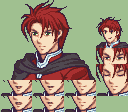
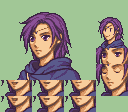
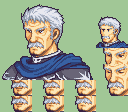
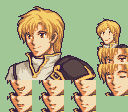

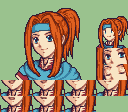

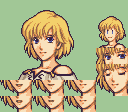
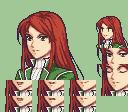
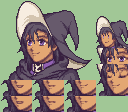
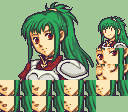


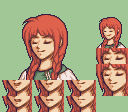
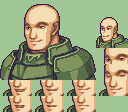
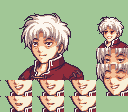
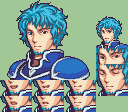
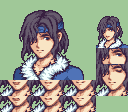
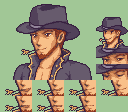

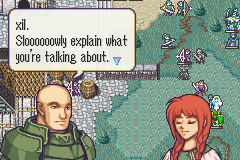
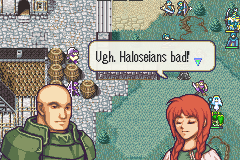
 so instead, I’m gonna divide this into little sub-parts. You know, Story Structure II-i, II-ii… Like a textbook!
so instead, I’m gonna divide this into little sub-parts. You know, Story Structure II-i, II-ii… Like a textbook!  Discussing the various types of characters that you have in the FE games, and the ways you have to handle them differently. Despite the ensemble nature of the FE games in a mechanical sense, you can’t really tackle the story telling in the same way an ensemble JRPG might, and so you sort of have to stratify your units to some degree.
Discussing the various types of characters that you have in the FE games, and the ways you have to handle them differently. Despite the ensemble nature of the FE games in a mechanical sense, you can’t really tackle the story telling in the same way an ensemble JRPG might, and so you sort of have to stratify your units to some degree. but at the end of the currently public build, Fane’s mentor is killed and he takes control of the player army in an official capacity. These pair of events kicks off a steady fall from grace, as Fane tries to grapple with a lot of very big questions while being, mentally and emotionally, in a very very dark place. When constructing this character arc and the various beats that happen in it, I was also keeping in mind what the main plot was intended to be – I wanted to tell a story about a lot of heavier subjects, like how war leads to radicalization which leads to more war, the act of othering, the way institutions can twist religion into a cudgel to suit their own needs. To determine how a character like Fane plays into these themes, I had to consider: Where does this story end? How does it get there? Just as importantly, how does Fane get there? And where does his story end? Where are these things different, and where are they the same? It’s in finding those similarities that much of the work is done; finding the points in your story where things are lining up, ‘clicking’ together like a jigsaw puzzle.
but at the end of the currently public build, Fane’s mentor is killed and he takes control of the player army in an official capacity. These pair of events kicks off a steady fall from grace, as Fane tries to grapple with a lot of very big questions while being, mentally and emotionally, in a very very dark place. When constructing this character arc and the various beats that happen in it, I was also keeping in mind what the main plot was intended to be – I wanted to tell a story about a lot of heavier subjects, like how war leads to radicalization which leads to more war, the act of othering, the way institutions can twist religion into a cudgel to suit their own needs. To determine how a character like Fane plays into these themes, I had to consider: Where does this story end? How does it get there? Just as importantly, how does Fane get there? And where does his story end? Where are these things different, and where are they the same? It’s in finding those similarities that much of the work is done; finding the points in your story where things are lining up, ‘clicking’ together like a jigsaw puzzle.
